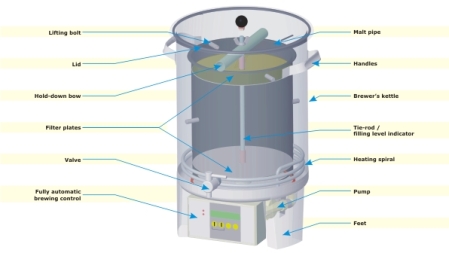When Mary’s found-by-the-side-of-the-road guitar fell apart, I thought it time to give it a third lease on life. I’ve seen a few people make oil-can banjos, so I thought I’d have a go at a biscuit tin guitar.
A tin does not have the structural rigidity to take the tension between either end of the guitar caused by tuning the strings up to pitch. My solution was to lengthen the neck of the guitar by adding a wooden spine. The tin would then float over this.
The other consideration is ‘scale length’. This is the distance between the nut and the bridge of the guitar, and is important because it can vary from instrument to instrument and each of the frets has been specifically calculated as a subdivision of this overall length. This should be measured before you hack up the donor guitar, but if that’s not available you can measure the distance from the nut to the 12th fret and double it. Once you know the scale length (mine was 25.5″) then you can start thinking about what sort of size can you will need to allow for the right scale length and a little extra so the bridge isn’t right on the edge of the can.
The first step (after liberating the neck from the old guitar body) was to cut some lengths of wood for the new spine. An L-shaped notch is made the length of the can so that the top surface (soundboard) of the can will not touch the spine underneath and therefore be free to vibrate.
I then glued the three lengths together to build up the thickness. I also radiused the front edge where the can meets the fretboard, because my can has a rounded end.
Next the spine is glued to the fretboard. This connection is going to need to be able to take quite some stress so I epoxied it and added a couple of screws.
Then the tin goes on. A hole is needed on the front edge for the spine to slot through. If it is cut in such a way that it creates flaps that fold in not only will those flaps centre the spine in the hole but a screw through one of those flaps will also hold it in place. When you’re happy that the fretboard sits parallel to the surface of the soundboard screw the end of the spine to the end of the tin can.
Coming up… tail piece, bridge, strings, music!







 Posted by philw4rd
Posted by philw4rd 
